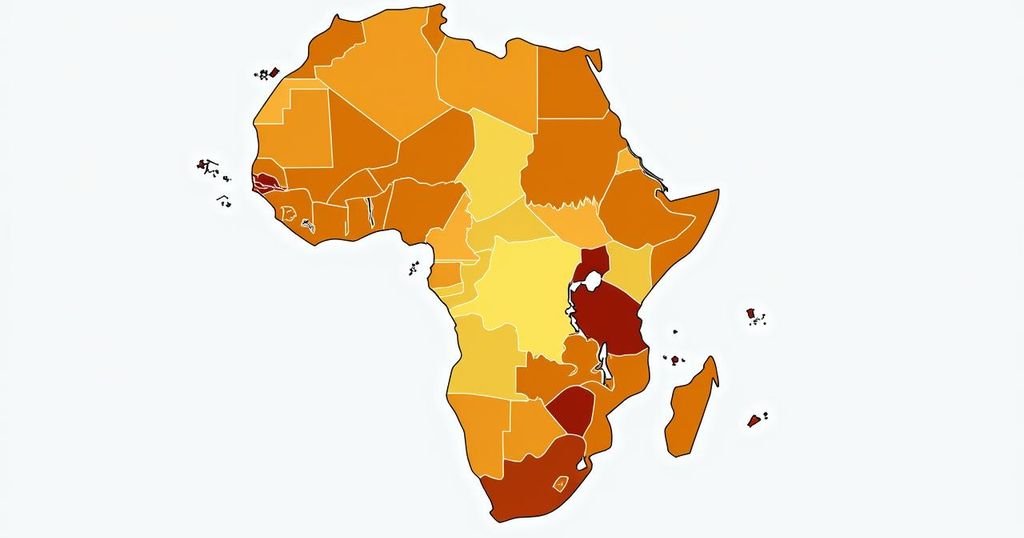The 2023/2024 El Niño has triggered severe drought conditions in Southern Africa, affecting countries such as Angola, Malawi, Mozambique, and others. This has led to widespread food insecurity, with nearly 23 million individuals facing hunger and millions more displaced. The health implications of the drought include malnutrition, increased risk of disease outbreaks, and strained health systems. There is an urgent need for humanitarian assistance and enhanced preparedness against the compounded challenges of climate change and public health crises.
In Southern Africa, the 2023/2024 El Niño event has produced unprecedented drought conditions across several nations, including Angola, Botswana, Lesotho, Malawi, Mozambique, Namibia, Zambia, and Zimbabwe. Characterized by a delayed onset of rains, prolonged dry spells, and excessively high temperatures, this El Niño event is recognized as the most severe to impact the region in the past 40 years. It has exacerbated pre-existing challenges faced by communities, such as crop failures and unfavorable economic conditions. The repercussions of this historic drought manifest as significant food shortages, limited clean water access, disease outbreaks, and livestock losses. According to estimates from national governments and FEWS NET, maize harvests have dropped drastically, resulting in communities exhausting their food reserves months prior to the next harvest opportunity in April 2025. Currently, it is estimated that nearly 23 million individuals are experiencing high food insecurity, with the most severely affected nations being Malawi, Zambia, Zimbabwe, and Mozambique. FEWS NET projects that between 14.0 and 14.9 million people will urgently require humanitarian assistance during the lean season from October to December 2024. In response to the crisis, national drought disasters have been declared in six countries within the region, including Botswana, Lesotho, Malawi, Namibia, Zambia, and Zimbabwe. Furthermore, Angola and Mozambique are also significantly impacted, with approximately 1.8 million people in Angola and 3.3 million individuals in Mozambique estimated to be experiencing food insecurity. The forecast for 2024 suggests that over 2 million children may become acutely malnourished, including over 500,000 suffering from severe wasting. The extreme weather conditions not only result in food and water shortages but also lead to the displacement of thousands, outbreaks of diseases, and detrimental effects on agriculture. The current drought situation coincides with ongoing cholera pandemics in the region, particularly affecting Malawi and Mozambique, where water shortages continue to compromise sanitation efforts. Furthermore, the emergence of mpox poses additional risks, potentially diverting resources and attention away from essential drought response measures. Beyond the immediate effects of the drought, there are significant implications for public health and well-being. These drought conditions heighten the risk of HIV and AIDS transmission, increase mental health challenges, and may escalate incidents of gender-based violence. These factors emphasize the urgent necessity for improved preparedness and response strategies. The intertwined effects of El Niño, cholera, conflicts, and climate change have created a substantial strain on health systems across Southern Africa, severely hindering access to vital sexual and reproductive health services. In total, over one million individuals have been internally displaced due to disasters and climate changes, primarily affecting populations in Malawi, Mozambique, and Zimbabwe.
The El Niño phenomenon is a recurring climate pattern that significantly impacts weather patterns globally, particularly in Southern Africa. The 2023/2024 event has manifested in an extreme manner, leading to severe drought conditions that are unprecedented in recent history. The region’s vulnerability to such climatic events is compounded by ongoing socio-economic issues, including food insecurity, health crises, and inadequate infrastructure. Moreover, the confluence of drought with outbreaks of diseases such as cholera has resulted in a heightened public health emergency, stressing the importance of preparedness and intervention in such affected communities. Understanding the historical context of El Niño’s impacts can provide insights into the intensive preparations required to address the consequences faced by millions across the region.
The 2023/2024 El Niño event has created a catastrophic drought that has led to extreme food insecurity and public health challenges across Southern Africa. With millions facing significant food shortages, limited access to clean water, and ongoing disease outbreaks, the situation necessitates urgent humanitarian intervention and support from local and international agencies. The convergence of climate change, health crises, and socio-economic instability illustrates the need for a comprehensive response strategy that not only addresses immediate needs but also fortifies the region against future environmental challenges. The current crisis emphasizes the importance of resilience and preparedness in the face of climate-related adversities.
Original Source: reliefweb.int







